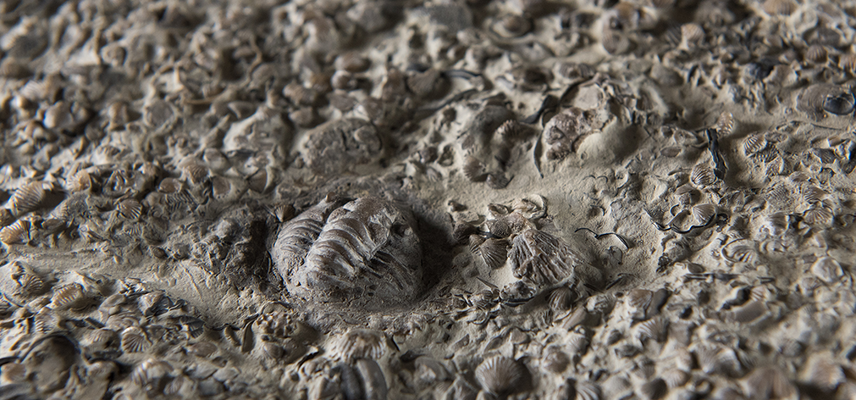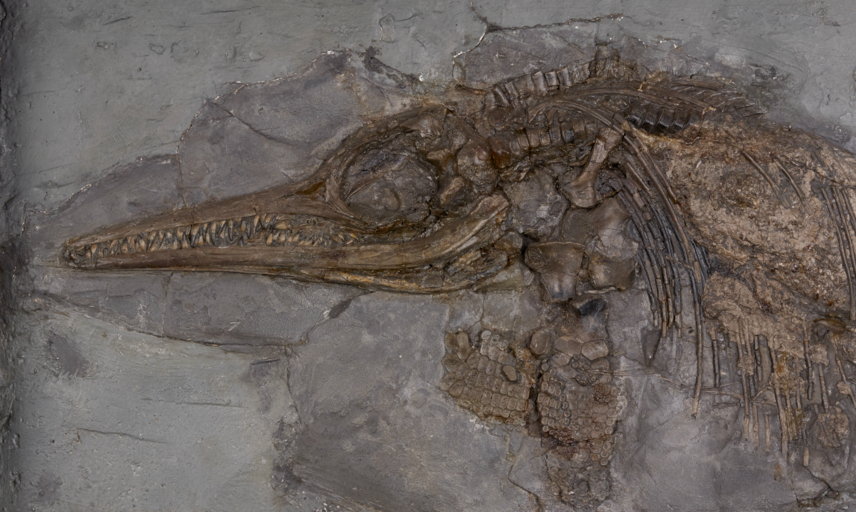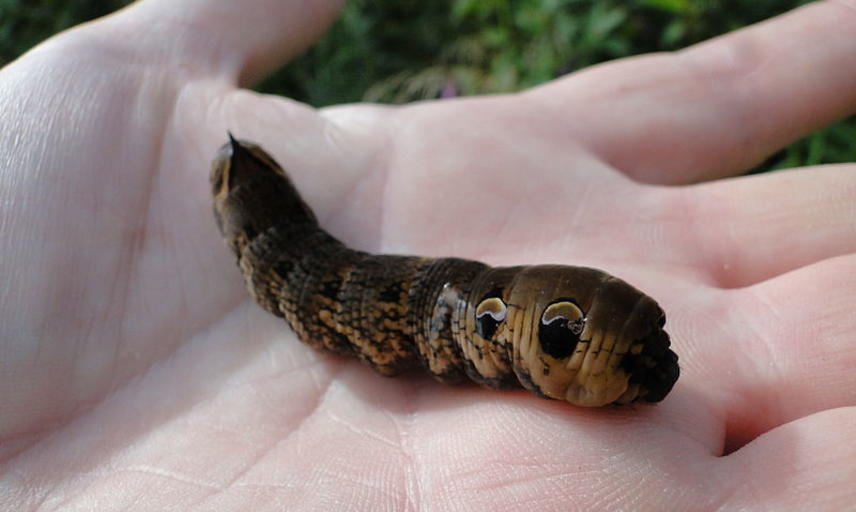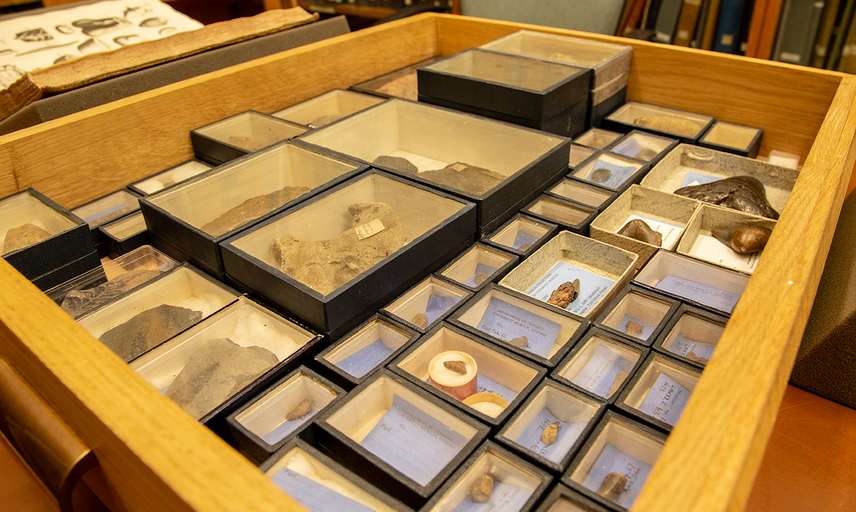Fossil vertebrates
The Museum’s growing vertebrate palaeontology collection contains around 40,000 specimens, with over 100 type specimens, dating from the Ordovician – around 460 million years ago – to the Pleistocene 11,700 years ago. All classes of vertebrates are covered, including jawless vertebrates, cartilaginous and bony fishes, amphibians, reptiles, birds and mammals. There are many historically important specimens, including those of Edward Lhywd, William Buckland, Elizabeth Philpot, Gideon Mantell, Thomas Hawkins and John Phillips.
Dinosaurs
The museum’s collection of Middle Jurassic dinosaurs is one of the most important in the world.
Some of the highlights are on display, including the type specimens of four dinosaurs from Oxfordshire:
- Megalosaurus bucklandii, the world’s first scientifically described dinosaur: a theropod from Stonesfield, described by William Buckland in 1824
- Cetiosaurus oxoniensis, a sauropod from Enslow Bridge
- Eustreptospondylus oxoniensis, a theropod from Summertown
- Cumnoria prestwichii, an ornithopod from Cumnor
The collection also includes the type specimens of the Middle Jurassic theropods Magnosaurus nethercombensis, Metriacanthosaurus parkeri and the Late Jurassic Juratyrant langhami, all from Dorset.
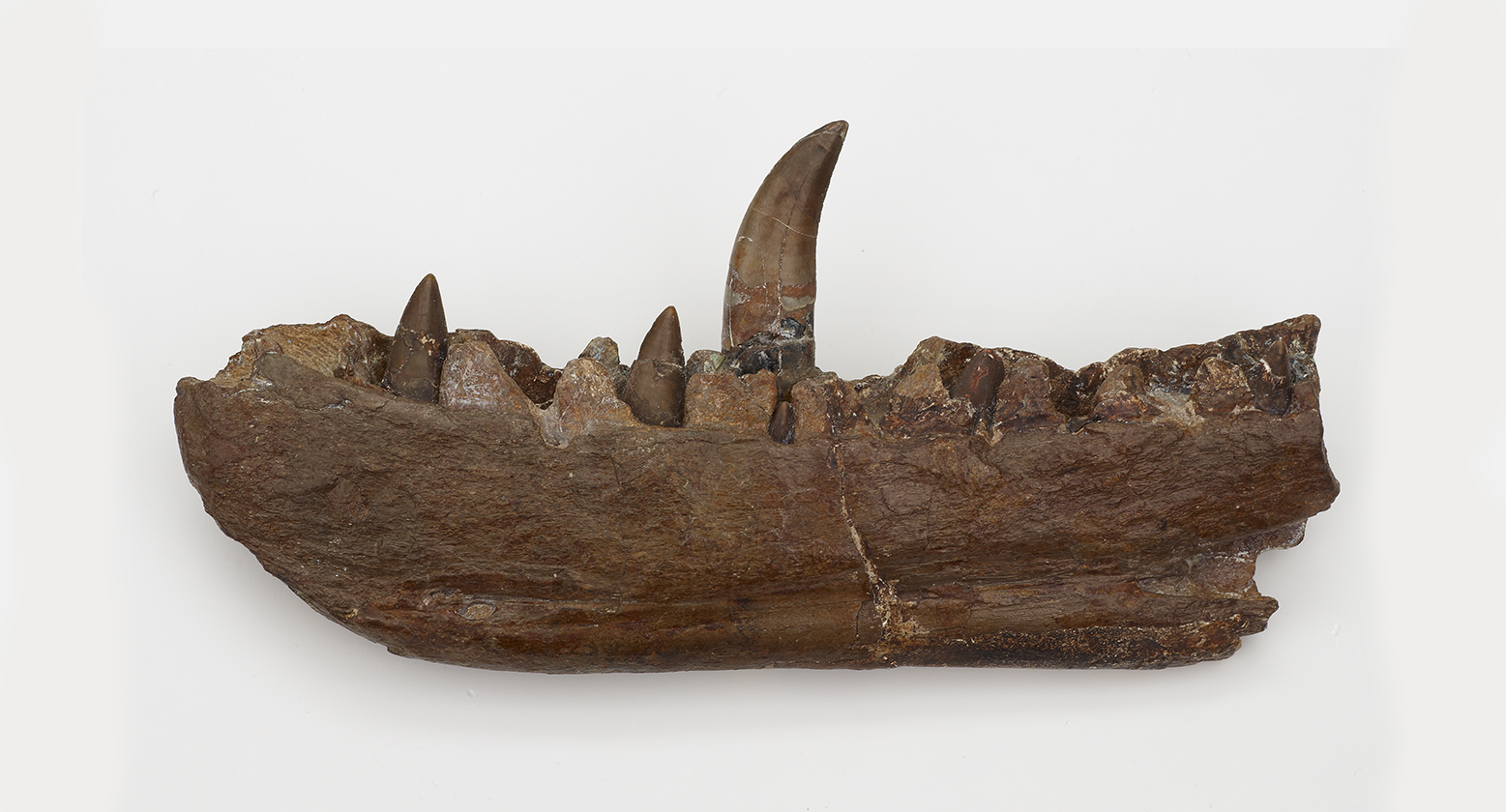
Bones from the skull of the world’s first scientifically described dinosaur - Megalosaurus bucklandii - can be seen on display.
Marine reptiles
Our Lower Jurassic marine reptile collection includes numerous type specimens and beautifully articulated skeletons of ichthyosaurs, plesiosaurs and crocodylomorphs from the Dorset coast, Street in Somerset and Holzmaden in Germany. Several specimens have preserved soft tissue and stomach contents.
The collection is also rich in material from the Middle and Upper Jurassic, including the Great Oolite Group, Oxford Clay and Kimmeridge Clay formations, and the Portland Stone.
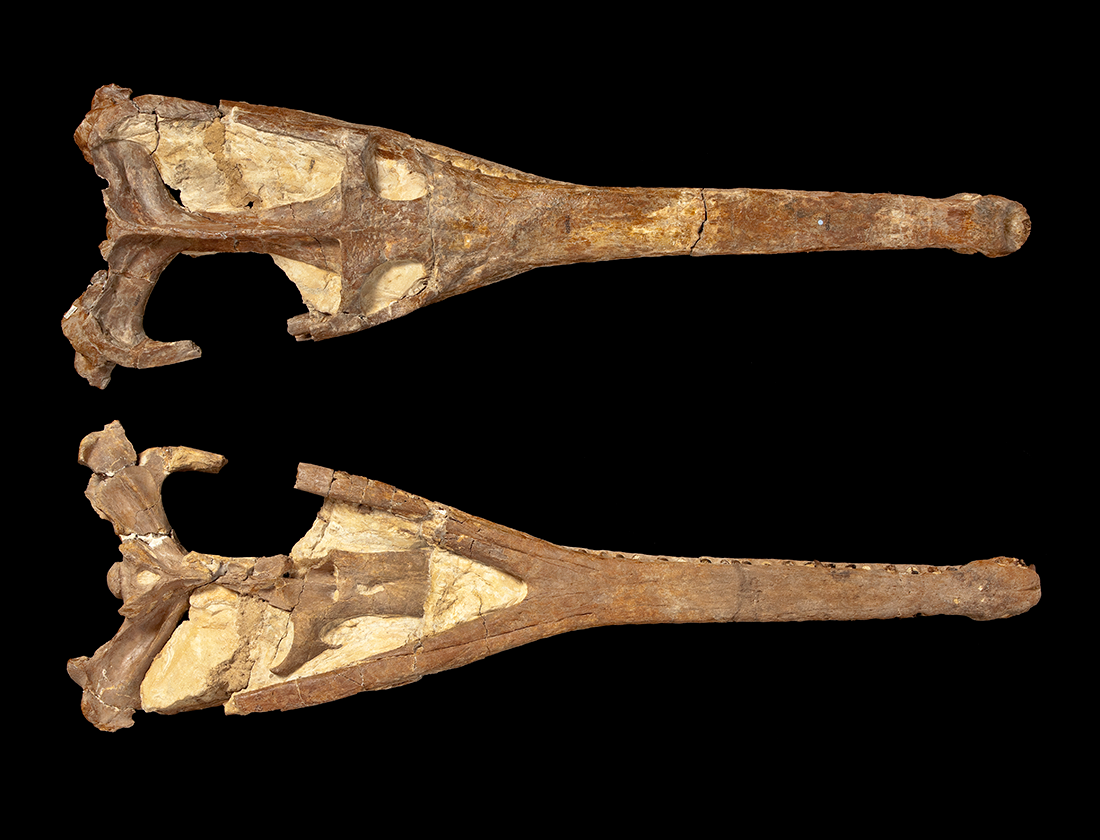
Skull of the crocodylomorph Steneosaurus herberti from the Middle Jurassic of Oxfordshire.
Highlights include:
- A juvenile ichthyosaur with stomach contents collected in Lyme Regis by Mary Anning
- An articulated skeleton of the crocodylomorph Steneosaurus bollensis preserved with stomach contents and the rings of tissue that once supported the windpipe
- A recent acquisition of a nearly complete long-necked plesiosaur skeleton from the Oxford Clay of Peterborough
https://www.youtube.com/embed/DNZt40l_aFg
3D model of a plesiosaur flipper from the Oxford Clay Formation.
Mammals
The collection of early mammals from Stonesfield and other Middle Jurassic localities around Oxfordshire includes one of the first Mesozoic mammal jaws ever discovered, and is of international importance.
The collection is also particularly strong in Pleistocene mammals, many of which were collected from local deposits in Oxfordshire. The Museum holds a highly significant collection of British and European Pleistocene cave mammals including those collected by William Buckland, William Pengelly and William Boyd-Dawkins from Kent’s Cavern, Wookey Hole, Kirkdale Cave and Paviland Cave, among others. We also have a sizeable collection of specimens from the Plio-Pleistocene of the Siwalik Hills in Northern India.
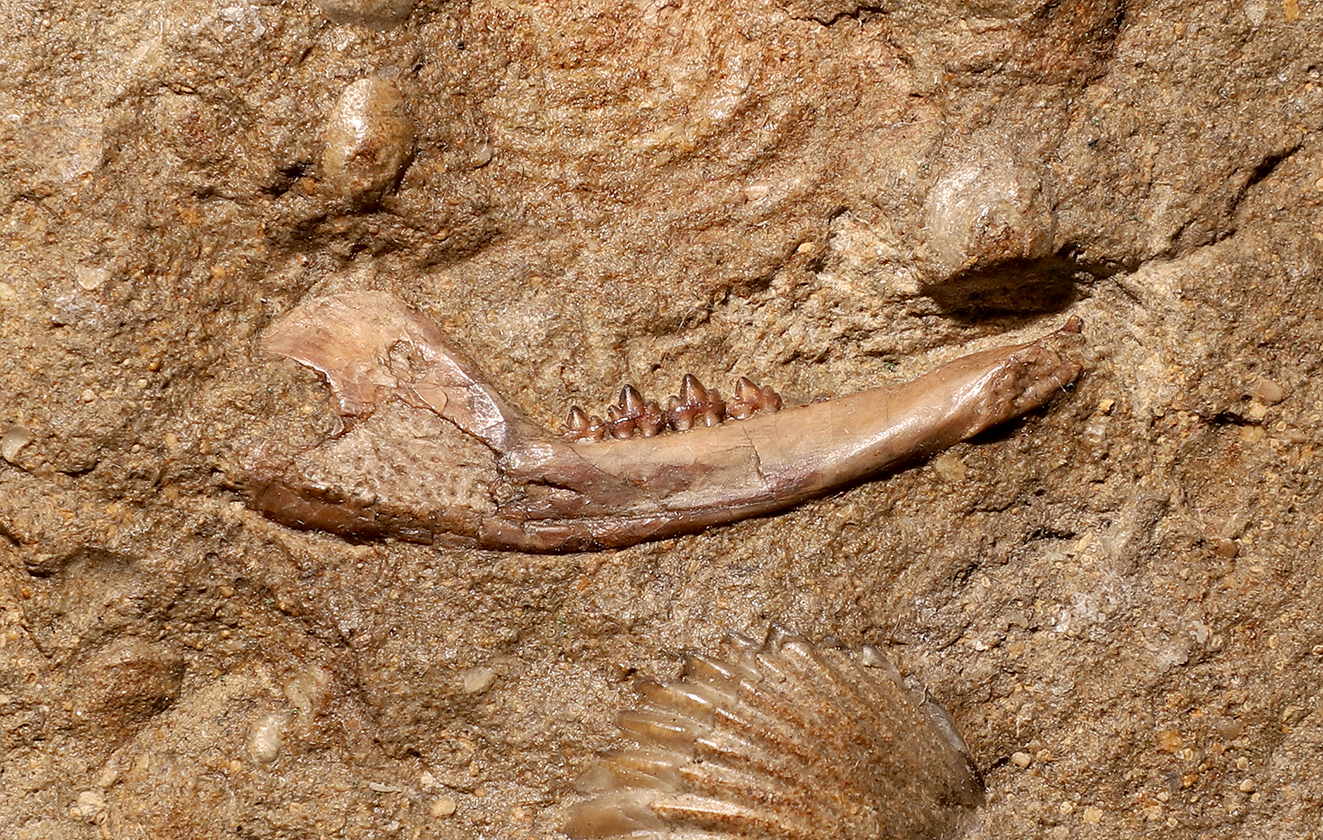
The 3cm-long jaw of the Middle Jurassic mammal Phascolotherium bucklandii from Stonesfield, Oxfordshire.
Highlights include:
- Material from Paviland Cave, Gower Peninsula, which includes a partial human male skeleton dating back to the Upper Palaeolithic, known as the 'Red Lady of Paviland', representing the oldest known ceremonial burial in Western Europe
- Material from Kirkdale Cave, North Yorkshire, where William Buckland carried out groundbreaking scientific analysis in 1822 that demonstrated it was once a hyena den
Fish
The Museum’s collection of fossil fishes, including jawless vertebrates, holds over 40 type specimens. The Palaeozoic and Mesozoic are particularly well represented, with significant collections from the Old Red Sandstone of Herefordshire and the Lower Jurassic of Dorset.
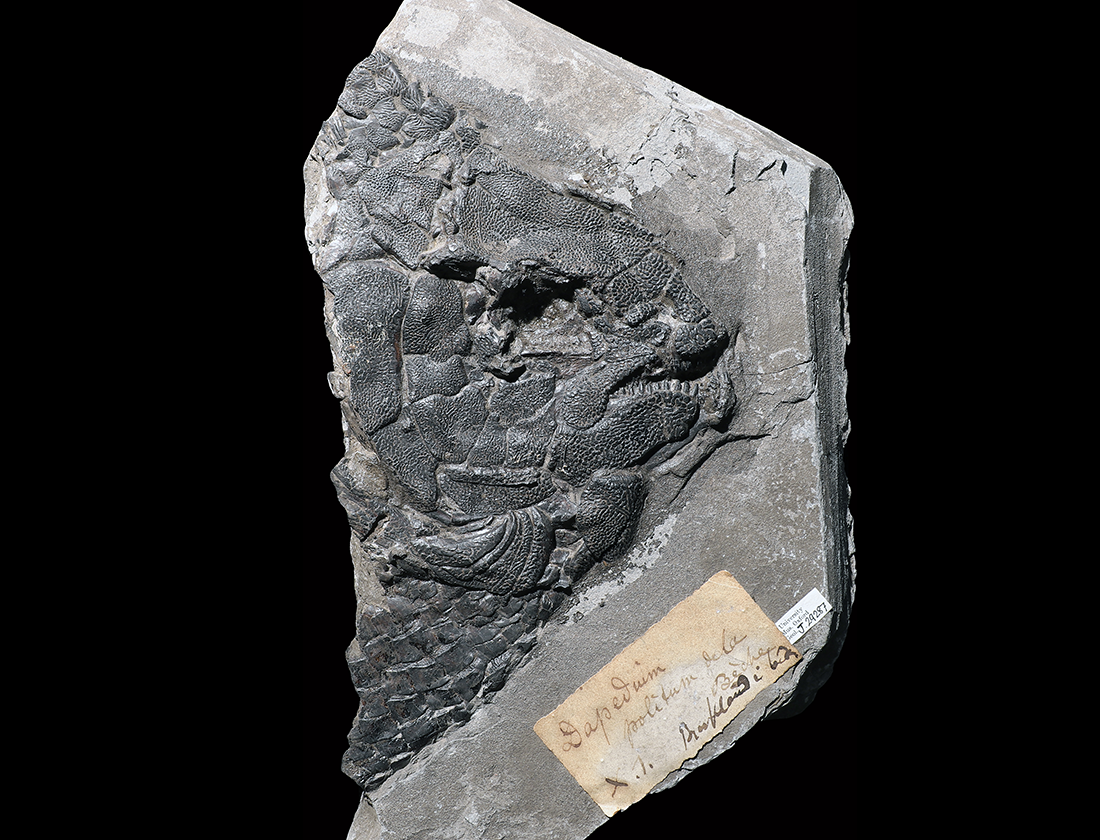
The skull of the fossil fish Dapedium politum, from the Lower Jurassic of Lyme Regis. From the Elizabeth Philpot collection.
Highlights include:
- The Elizabeth Philpot collection, including the holotype of Dapedium punctatum and part of the holotype of Squaloraja polyspondyla from the Lower Jurassic of Lyme Regis
- The R B Grindrod and J P Bennett collections of jawless vertebrates from the Palaeozoic of the Welsh Borderland




